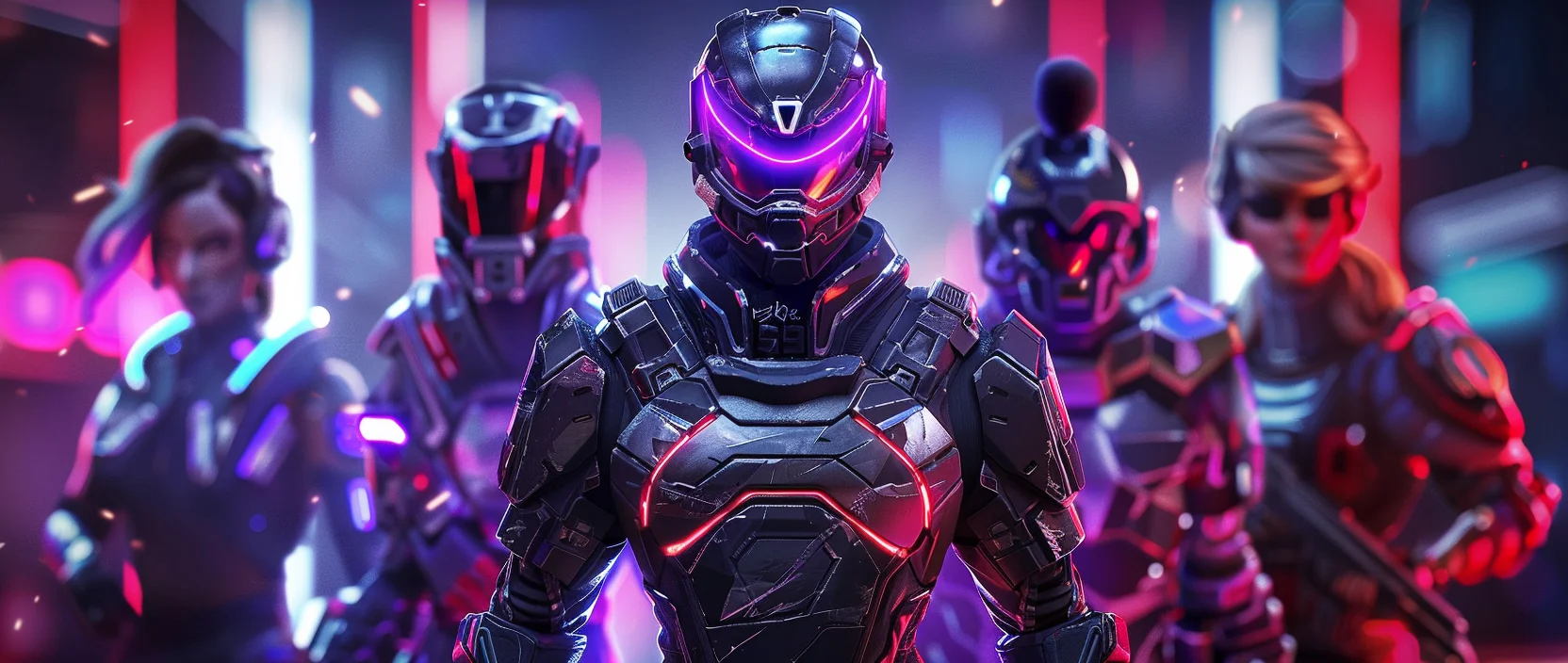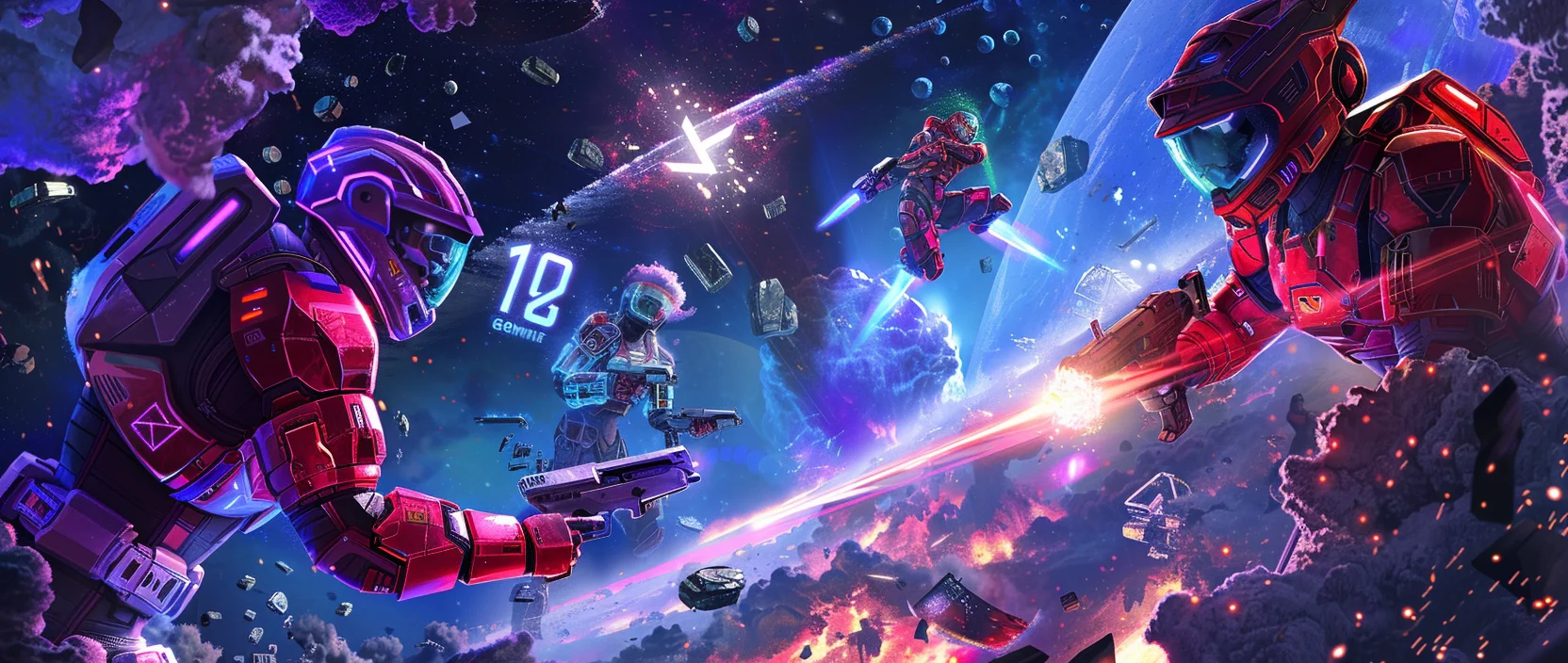Fort Block Games (FBG) offers players an exciting experience by combining familiar game mechanics from Fortnite and Roblox with Web3 technologies such as NFTs, tokenomics, and revenue sharing. In this article, we explore the platform's concept, features, token utility, and development prospects.
Contents
- What is Fort Block Games
- Ecosystem and Games
- $FBG Token and Platform Economy
- Technology Architecture of the Game
- Development Roadmap
- Community and Partnerships
- Challenges, Risks, and Criticism of Fort Block Games
- Conclusion

1. What is Fort Block Games
Fort Block Games is a cross-platform GameFi project that merges Web3 elements with mainstream gaming. The FBG team develops titles for Roblox, Fortnite, PC, consoles, and their own blockchain product, enabling token holders to participate in revenue-sharing.
The project's mission is not just entertainment but to build a full ecosystem where in-game progress translates into real economic incentives. It is not a typical P2E model, but a balance between engaging gameplay and decentralized finance.
FBG targets multiple audiences across Roblox, Fortnite, and Unreal Engine 5, including casual and competitive gamers. The platform integrates NFTs, the $FBG token, and a reward system focused on sustainable Web3 game development.
2. Ecosystem and Games
Fort Block Games builds its ecosystem around several game types, aiming to attract a wide audience. Titles span popular engines from Roblox to Unreal Engine 5 and are linked through the $FBG token, NFT assets, and a unified reward system. This multi-platform strategy promotes gameplay diversity and user retention.
Key Games of Fort Block Games:
| Platform | Game | Genre and Features |
|---|---|---|
| Roblox | Escape Merica 2069 | Arcade runner with leaderboards. Players race for time, collect items, and earn rewards. Features NFT integration and acts as an onboarding entry into the FBG ecosystem. |
| Fortnite | Gator District | Battle-royale survival map. Supports customization with plans for expanded game modes in future updates. |
| Unreal Engine 5 | TAKEOVER | Competitive shooter designed for tournaments. Integrated with Web3, allowing players to earn tokens, place skill-based wagers, and share rewards — without gambling mechanics. |
Each game plays a distinct role in the ecosystem: some drive initial traffic, while others foster competitive engagement. Together, they form a cohesive Web3 gaming model blending entertainment, economy, and skill-based interaction.
3. $FBG Token and Platform Economy
The $FBG token underpins the Fort Block Games economy and is used in all core platform interactions. Issued on Ethereum, it bridges gaming activity and financial participation.
Key Utilities and Features:
- Used for rewards tied to game achievements, tournament participation, and leaderboard rankings.
- Allows players to place bets on their own or others' matches, creating a competitive economy.
- Accepted as a payment method in NFT marketplaces and in-game stores.
- Total supply is fixed at 10 million tokens, all currently in circulation.
- Market price is around $0.02 per token, with a capitalization of ~$200,000.
- Integrated into Web3 engagement mechanics, encouraging users to stay active in the ecosystem.
Thus, $FBG is more than a speculative asset — it is embedded in gameplay and platform operations, supporting long-term user participation.
4. Technology Architecture of the Game
Fort Block Games combines blockchain technology with seamless integration into mainstream game engines. This hybrid approach supports scale, security, and flexibility across Web3 features.
- Ethereum Smart Contracts — manage the $FBG token, rewards, and wager systems.
- Immutable X (Layer 2) — enables fast, gas-free transactions, especially for NFTs and in-game assets.
- Engine Integration — the platform connects to Roblox, Fortnite, and UE5 using APIs and SDKs to enable blockchain features in familiar environments.
- Forte Technology — governs economic rules using contract-level logic and ZK-policy modules for secure and compliant interactions.
This architecture allows Fort Block Games to deliver a fully gamified Web3 experience while maintaining technical integrity across multiple platforms.

5. Development Roadmap
Fort Block Games follows a phased development plan focused on scaling the ecosystem and rolling out core experiences. Initial efforts included the launch of Escape Merica 2069 and Gator District, alongside the $FBG token sale and listings on CoinGecko and CoinMarketCap.
Subsequent milestones introduced the Web3 website, NFT RevShare collection, and a closed UE5 alpha test for holders of more than 1% of tokens. In the next phase, the team expanded Roblox and Fortnite content and launched a beta for TAKEOVER on UE5.
Looking ahead, Fort Block Games plans to evolve into a broader metaverse, establish esports partnerships, and expand to other game engines. Progress is transparently documented and regularly updated via the GitBook platform.
6. Community and Partnerships
FBG builds strategic alliances with both tech providers and media platforms. Immutable X offers scalable NFT infrastructure, while the acquisition of streaming platform EsportPlayer enhances reach and user engagement. Security and transparency are ensured through integration with audit partner Assure DeFi.
The community is active across X (Twitter), Telegram, and Discord. Currently, there are about 730 token holders. Plans are underway to implement DAO governance, enabling users to participate directly in platform decisions and evolution.
7. Challenges, Risks, and Criticism of Fort Block Games
Despite its potential, Fort Block Games faces several hurdles. One major issue is liquidity — daily trading volume remains low, limiting flexibility for larger investors. The token has also dropped by 95% from its all-time high of $0.47 in March 2024.
Regulatory uncertainty around blockchain gaming may pose additional risks, especially across different jurisdictions. Meanwhile, growing competition from other GameFi platforms and traditional studios entering Web3 heightens the need for quality, innovation, and retention strategies.
Nonetheless, Fort Block Games benefits from a solid technical foundation, experienced team, and multi-platform design — all of which support its long-term potential.
8. Conclusion
Fort Block Games is an ambitious Web3 project that blends casual and competitive gaming with real economic value. Its integration of Roblox, Fortnite, and UE5 — supported by Immutable X — sets it apart in the evolving GameFi space.
While liquidity and volatility present short-term challenges, the project already demonstrates functional products, token utility, and a clear roadmap. The key will be scaling its user base and sustaining token economy across all platforms.
For those exploring Web3 gaming, Fort Block Games offers real, working examples — from casual arcade runs to tournament-grade shooters. With continued development and strong community support, it has the potential to establish itself as a key player in the decentralized gaming economy.




